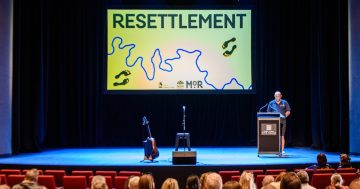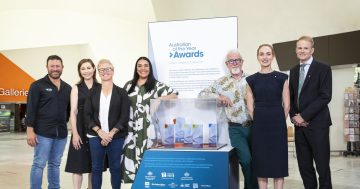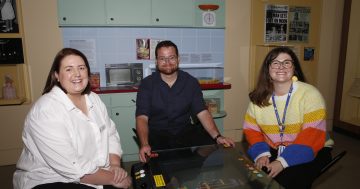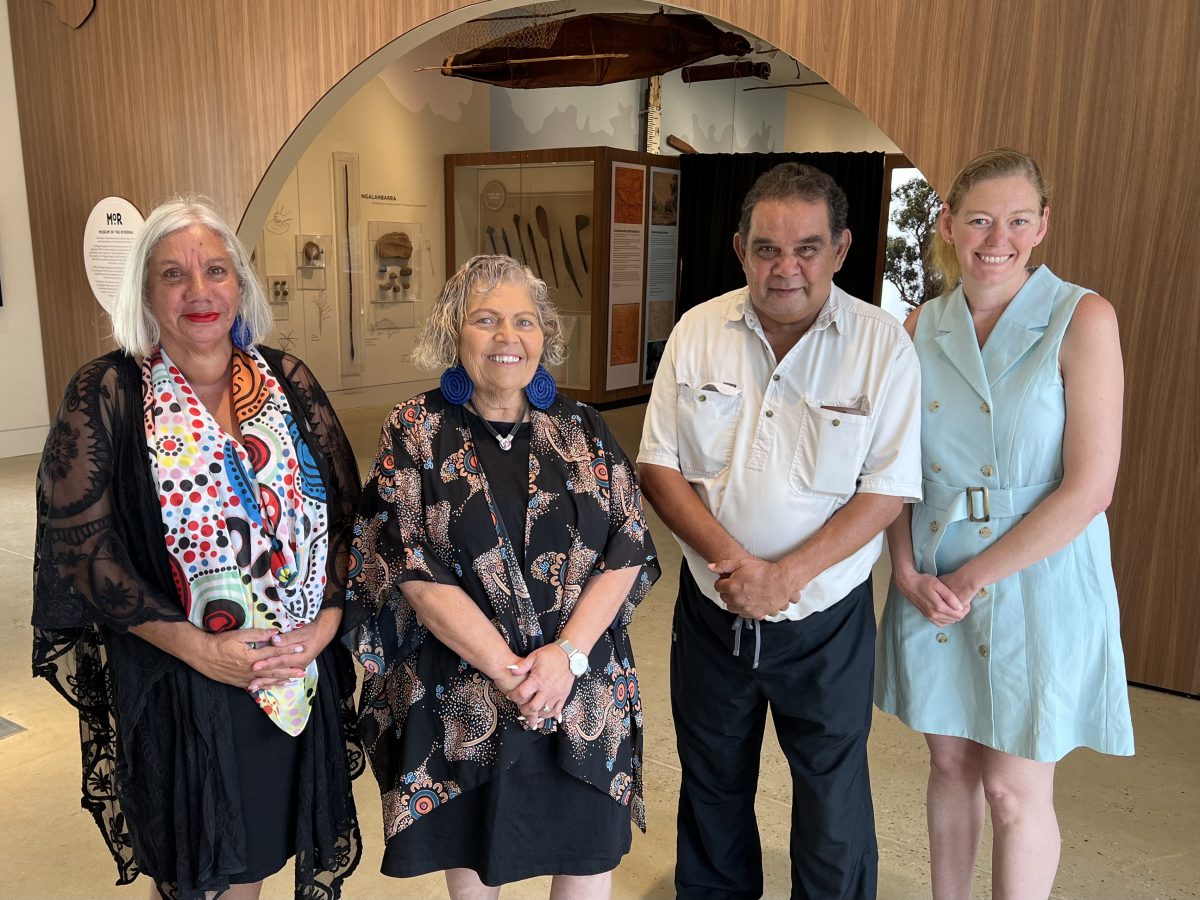
Aunty Cheryl Penrith, Aunty Mary Atkinson, Uncle James Ingram and Sam Leah from the Museum of the Riverina. Photo: Chris Roe.
Things are taking shape at the Museum of the Riverina’s redeveloped Botanic Gardens site and Aunty Mary Atkinson couldn’t be more pleased.
“I just love the way this is. At the very first front when you walk into this building there are Wiradyuri people,” she says proudly, indicating the photographs and displays of artefacts at the entrance to the new gallery space.
“They’ve always been here and they always will be here!”
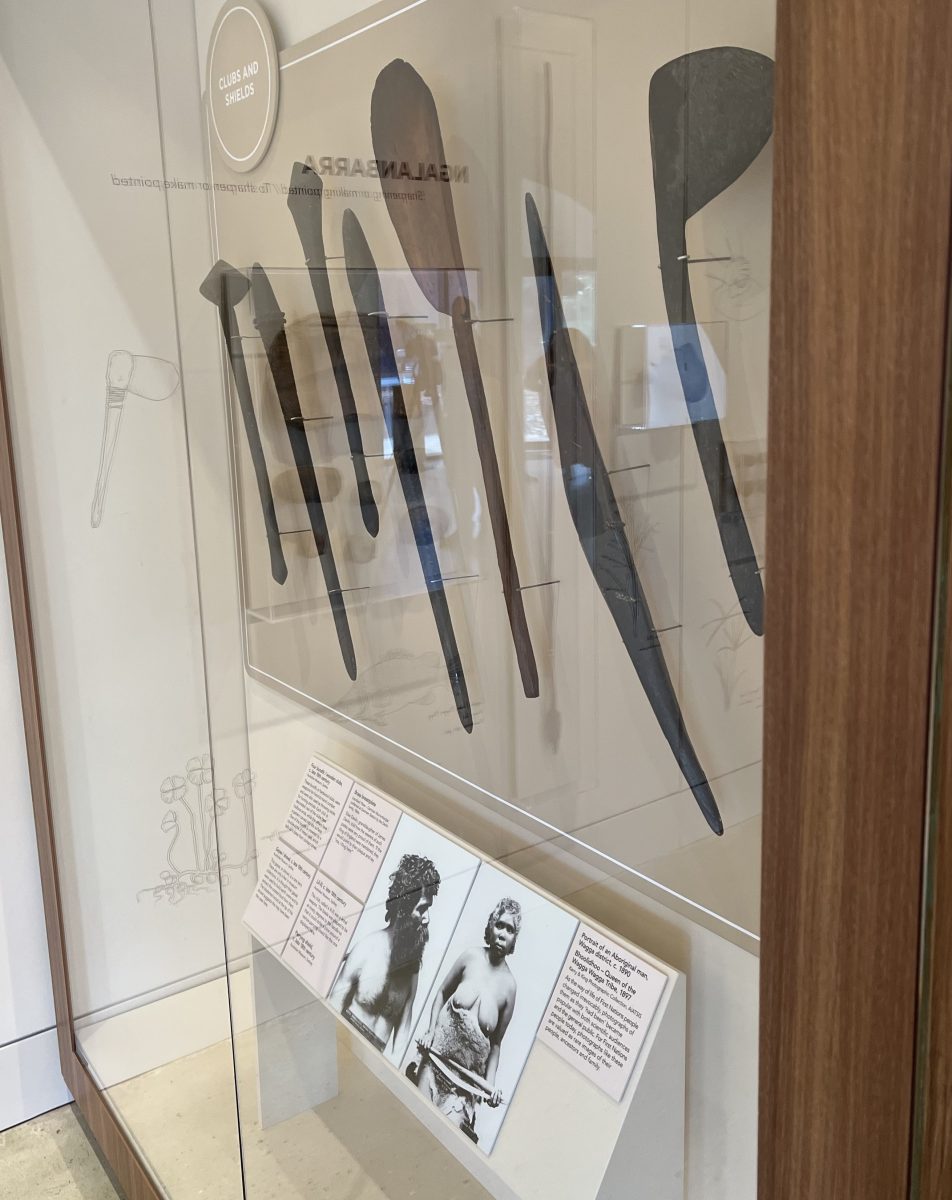
The seven Wiradyuri objects will be opened to the public in February. Photo: Chris Roe.
Members of Wagga’s Mawang Gaway Wiradyuri Gallery Reference Group have gathered to showcase seven highly significant cultural objects that arrived this week from the Australian Museum First Nations collection.
Aunty Cheryl Penrith was chosen by the group to travel to Sydney to oversee the transfer of the objects.
“It’s been a really fantastic collaboration between the advisory committee, the Museum of the Riverina and the Australian Museum,” she says.
“It’s really rewarding to see something come together and it’s here in the museum, it’s a really emotional and fantastic feeling.”
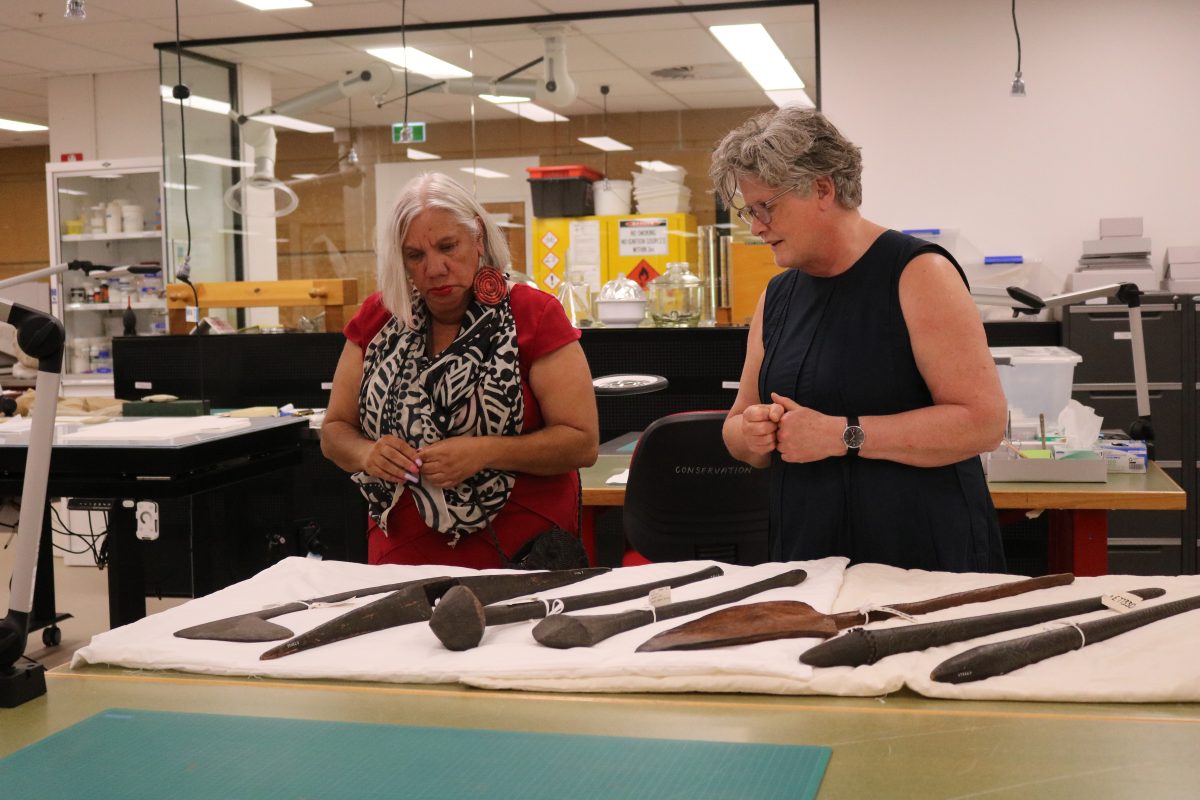
Aunty Cheryl Penrith and Dr Robyn McKenzie from the ANU examine the objects at the Australian Museum in Sydney. Photo: Supplied.
Aunty Cheryl says she was initially daunted by the idea of handling them, both due to their antiquity and the fact that most of the items were traditionally used by men.
“You sort of think, are you doing the right thing? I think you’ve got to trust what’s in here,” she says, laying her hand on her chest.
“It really grounds you in place, I think. It’s something that’s from the country that we live on.”
For Uncle James Ingram, the repatriation of the artefacts has been decades in the making and is an important step in reclaiming his people’s heritage.
“We’ve got our songlines through NSW and Wiradyuri Country, we have our language and we have our sacred sites, and we also have our artefacts that are yet to be returned to this country,” he explains.
“To actually hold them and touch them and understand that maybe 100 years ago, one of our people made that for us to hold today.”
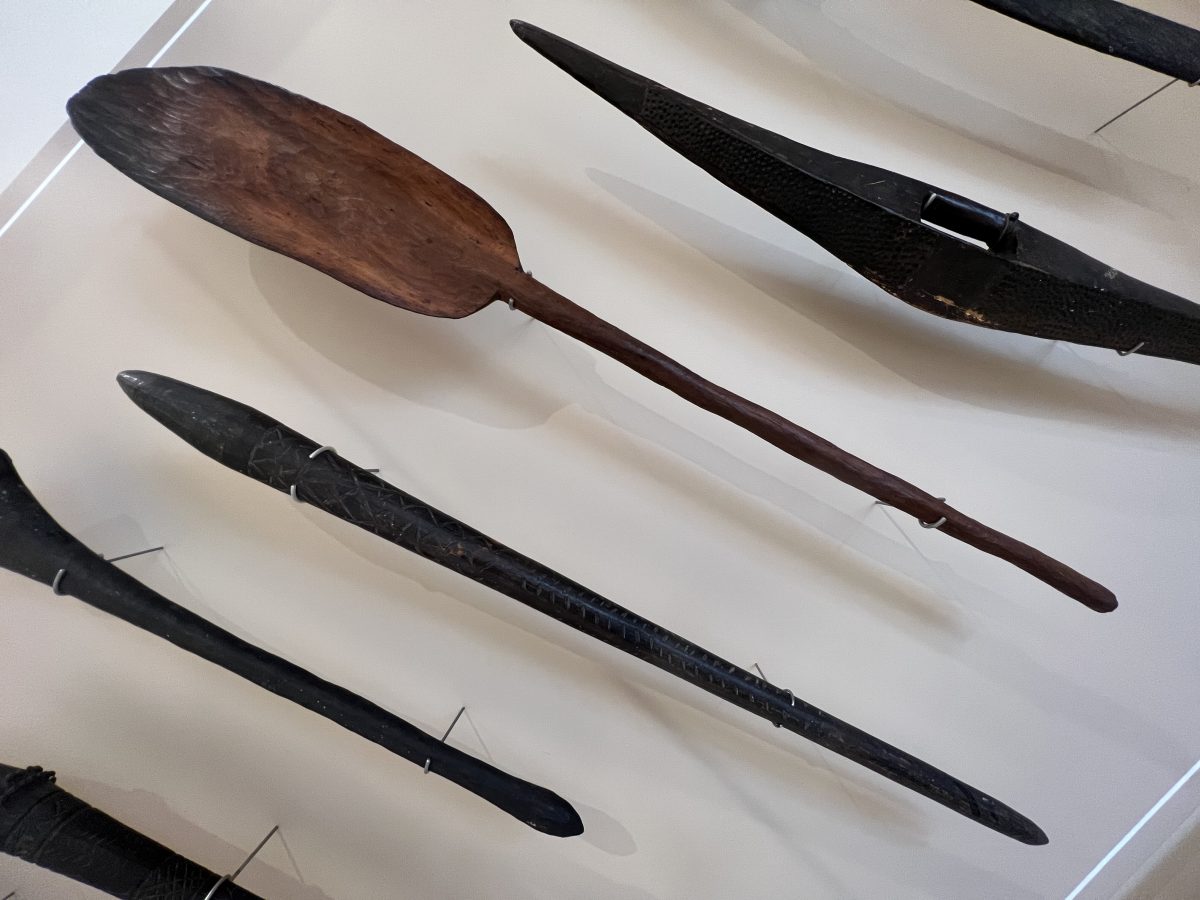
The ”shovel” is distinctive to South Eastern Australia and is thought to have been used in cooking. Photo: Chris Roe.
The seven objects were originally collected in the 1860s on Ganmain Station and include a parrying shield, four clubs, an axe-shaped throwing stick or “killing boomerang” and, remarkably, a wooden shovel.
The broad-headed digging implement is carved from a single piece of wood.
The object is unique to South Eastern Australia and its blackened end suggests that it was used in cooking and creating oven mounds.
Dr Mariko Smith, a Yuin woman and the manager of First Nations Collections at the Australian Museum, says it provides an insight into past land management practices.
“We thought initially that these may have just been copied from Western-style shovels post-colonisation, but no, what we’re finding out is that this is a design that Aboriginal people themselves were using,” she says.
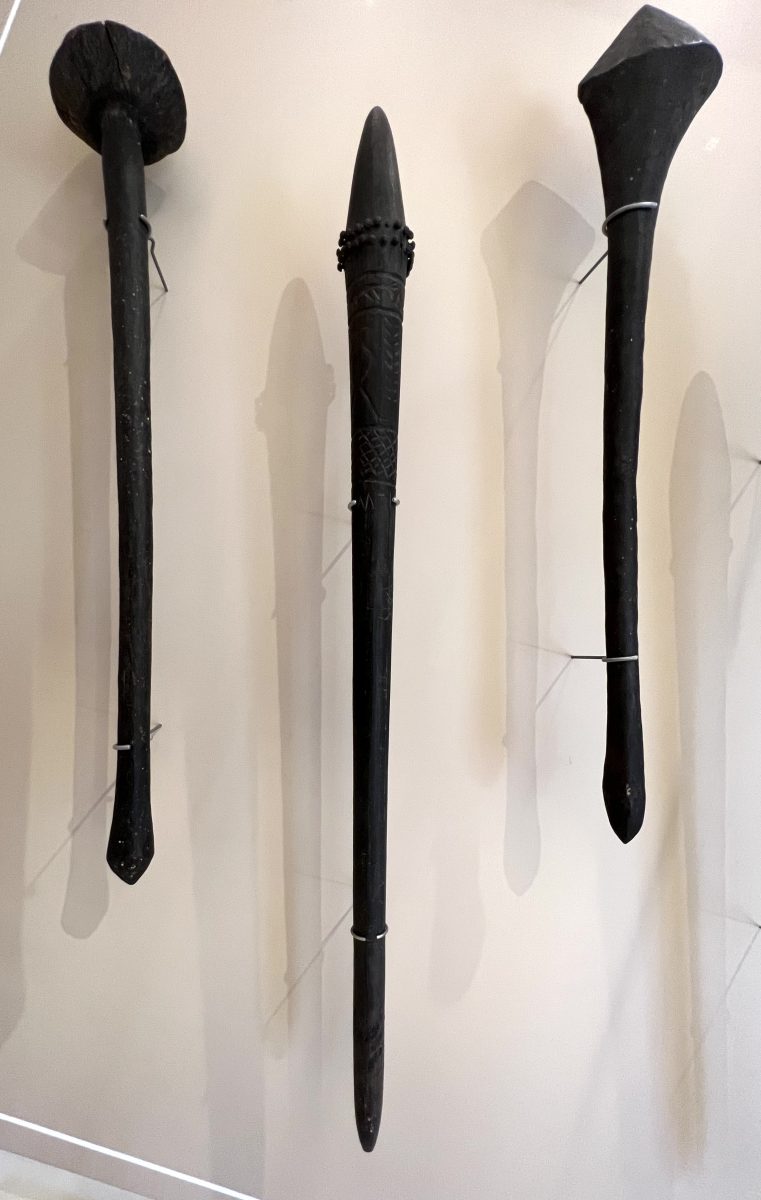
The collection includes a variety of clubs. Photo: Chris Roe.
Some of the items are intricately carved, and the blackened patina on the clubs and shield suggests they have been hardened in fire and burnished with oil.
Dr Robyn McKenzie from the ANU says a lot can be learned by handling the objects and reuniting them with traditional owners and Country.
“It’s like they’re also being re-socialised in the sense that they’ve now got people to interact with and so this is just the beginning in the sense of what might come from it and what we might learn,” she explains.
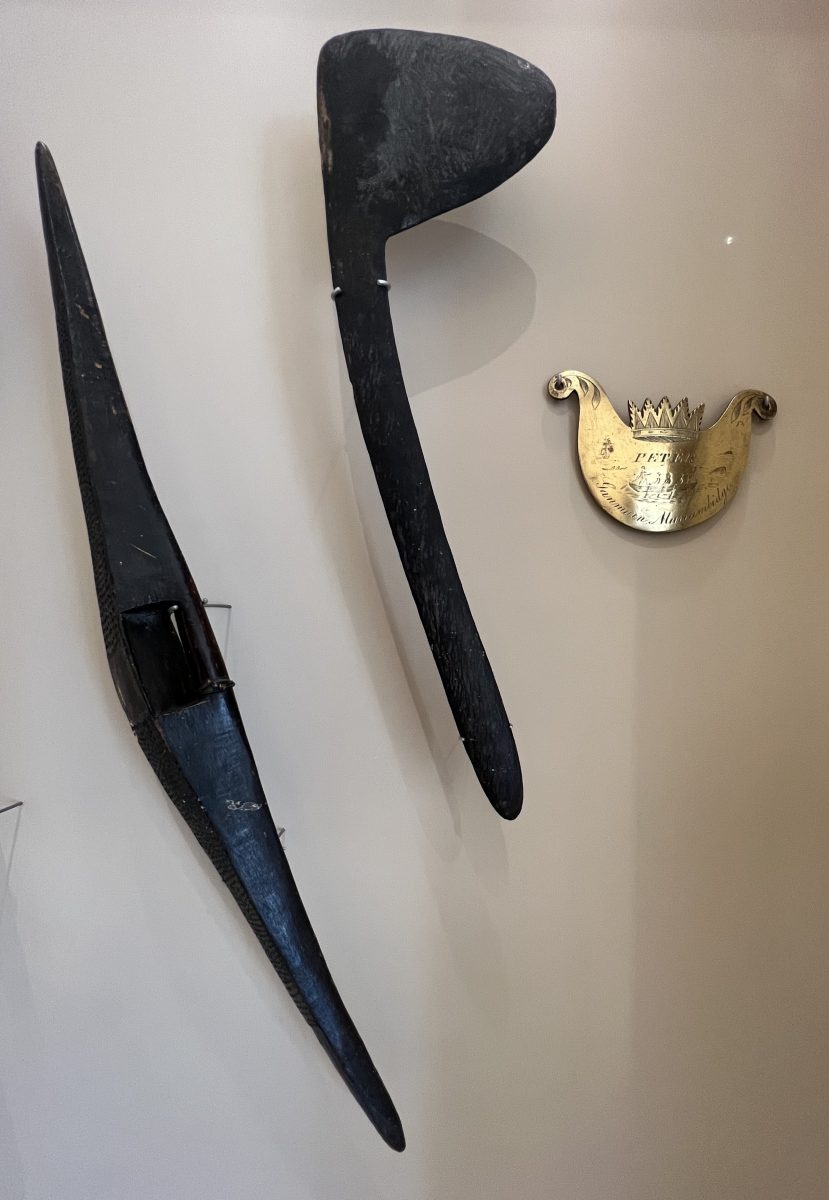
A parrying shield and a killing boomerang or ”lil lil” are displayed alongside the ”King Peter” breastplate. Photo: Chris Roe.
The seven objects are beautifully displayed near the museum entrance alongside an additional, connected item from the Museum of the Riverina’s collection.
The brass “King Peter” breastplate was presented to a Wiradyuri leader by the Devlin family, who owned Ganmain Station and collected the seven artefacts.
The engraved gorgets were commonly presented to prominent Aboriginal leaders by European settlers as a sign of endorsement or recognition of service and today can present an uncomfortable reminder of colonisation.
But Dr Mariko Smith explains that it adds an extra dimension to the story and challenges people to look deeper.
“I’ve worked on First Nations exhibitions before and it’s always about how can these displays be more than just showing physical objects. How can they tell stories?” she asks.
“I think it’s really fantastic to incorporate that King plate that mentions Ganmain and it’s all part of this, trying to provide a more complete, richer history and context.”
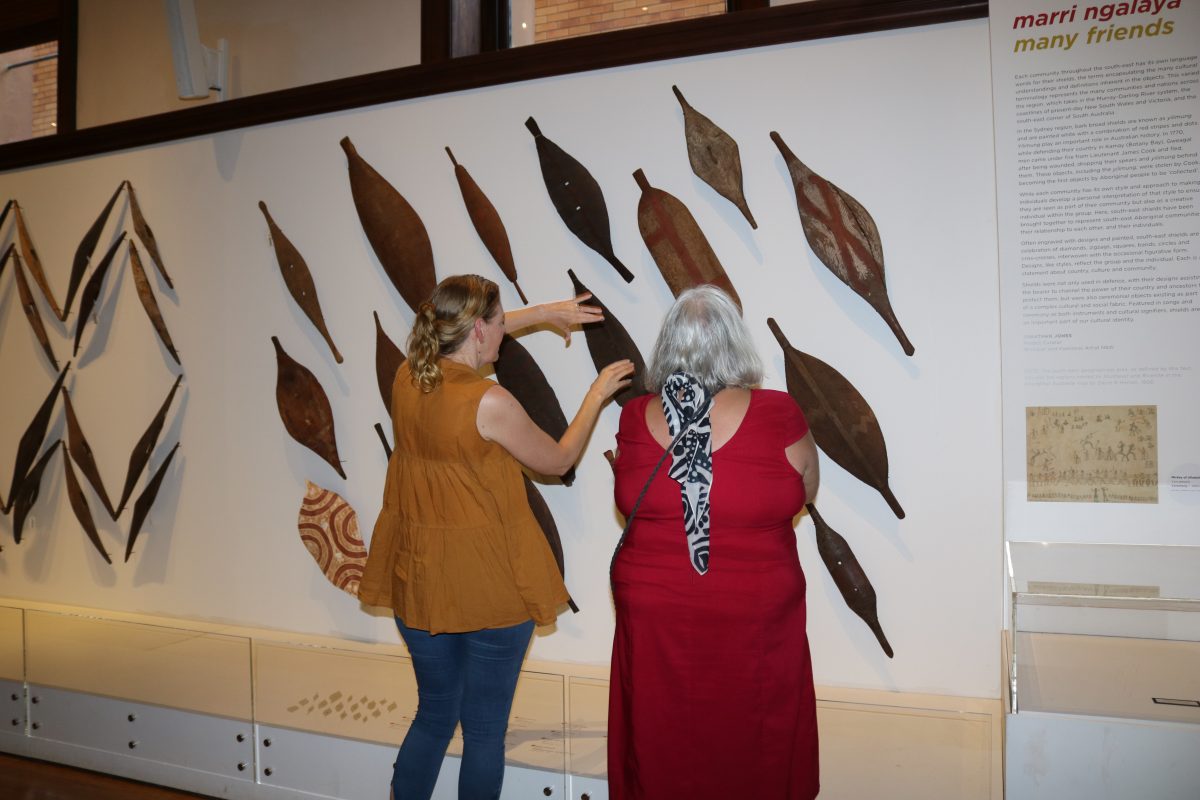
The Australian Museum currently has a collection of shields, including many from Brungle, on display. Photo: Supplied.
Aunty Cheryl is looking forward to sharing the exhibition with the public after the new facility is opened in February and says the past four years have shown what is possible.
“It was a really lovely process and I think other people can learn from how we did this,” she says, adding that there are many other objects that she hopes will return home.
“The Australian Museum holds a lot of Wiradyuri pieces. At the moment, in one of their displays, they’ve got some shields, so that would be really lovely, and we are looking at things from Brungle, Gundagai and Ganmain again, they’re all local things and this museum covers this whole area.”







